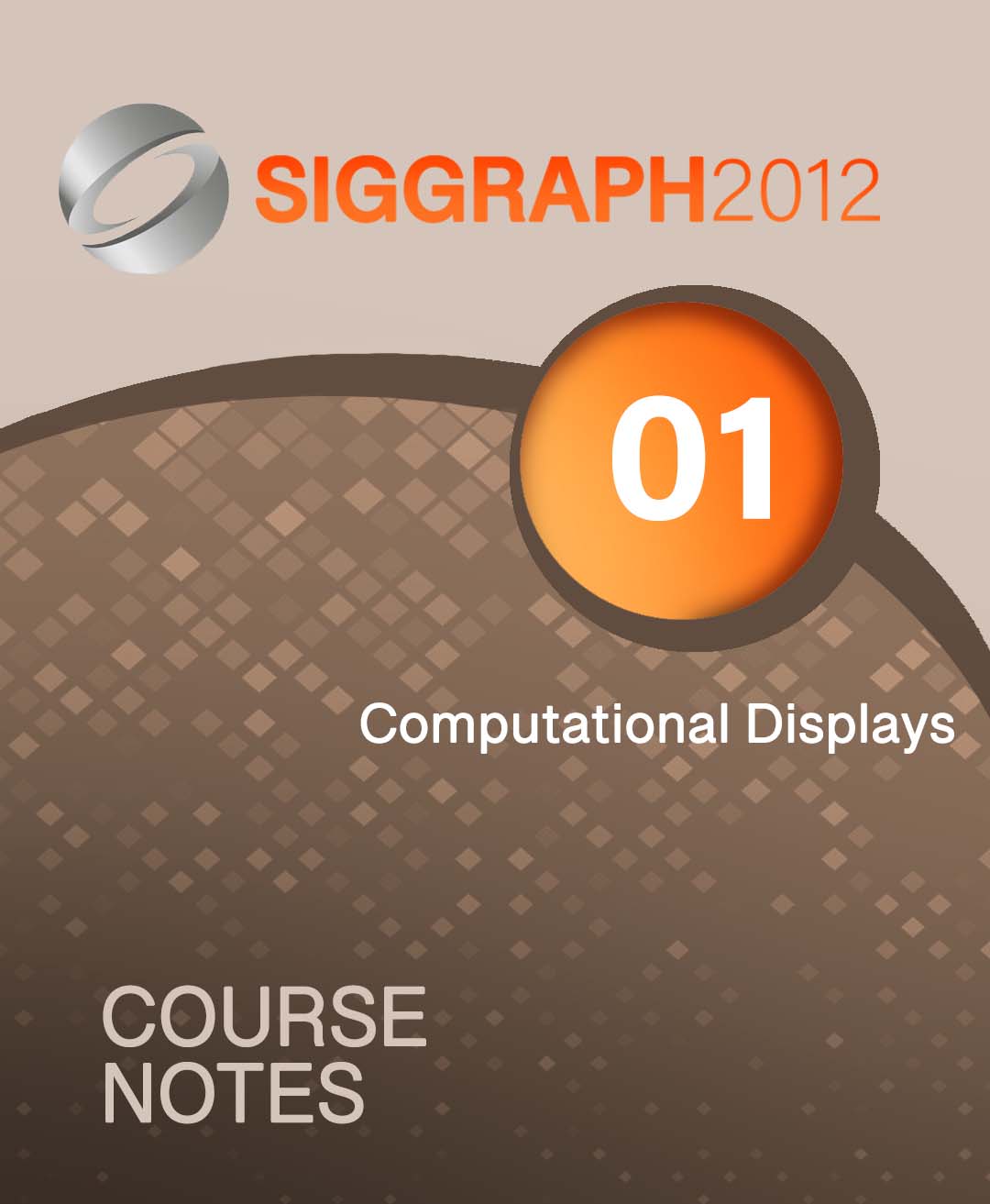“Computational Displays” by Gutierrez, Hirsch and Lanman
Conference:
Type(s):
Title:
- Computational Displays
Organizer(s):
Presenter(s)/Author(s):
Entry Number: 01
Abstract:
Prerequisites
For this intermediate-level course, some familiarity with Matlab, C/C++, OpenGL, as well as a general understanding of linear algebra and Fourier analysis is assumed, although the course also functions as a brief, application-driven introduction to each of these tools.
Abstract
With the invention of integral imaging and parallax barriers in the beginning of the 20th century, glasses-free 3D displays have become feasible. Only today —more than a century later— glasses-free 3D displays are finally emerging in the consumer market. The technologies being employed in current-generation devices, however, are fundamentally the same as what was invented 100 years ago. With rapid advances in optical fabrication, digital processing power, and computational models for human perception, a new generation of display technology is emerging: computational displays exploring the co-design of optical elements and computational processing while taking particular characteristics of the human visual system into account. This technology does not only encompass 3D displays, but also next-generation projection systems, high dynamic range displays, perceptually-driven devices, and computational probes. This course serves as an introduction to the emerging field of computational displays. The pedagogical goal of this course is to provide the audience with the tools necessary to expand their research endeavors by providing step-by-step instructions on all aspects of computational displays: display optics, mathematical analysis, efficient computational processing, computational perception, and, most importantly, the effective combination of all these aspects.
Specifically, we will discuss a wide variety of different applications and hardware setups of computational displays, including high dynamic range displays, advanced projection systems as well as glasses-free 3D display. The latter example, computational light field displays, will be discussed in detail. In the course presentation, supplementary notes, and an accompanying website, we will provide source code that drives various display incarnations at real-time framerates, detailed instructions on how to fabricate novel displays from off-the-shelf components, and intuitive mathematical analyses that will make it easy for researchers with various backgrounds to get started in the emerging field of computational displays. We believe that computational display technology is one of the “hottest” topics in the graphics community today; with this course we will make it accessible for a diverse audience. While the popular, introductory-level courses “Build Your Own 3D Displays” and “Build Your Own Glasses-free 3D Display”, previously taught at SIGGRAPH and SIG- GRAPH ASIA, discussed conventional 3D displays invented in the past, this course introduces what we believe to be the future of display technology. We will only briefly review conventional technology and focus on practical and intuitive demonstrations of how an interdisciplinary approach to display design encompassing optics, perception, computation, and mathematical analysis can overcome the limitations for a variety of applications.
We will discuss all aspects of computational displays in detail. Specifically, we begin by introducing the concept and discussing a variety of example displays that exploit the joint-design of optical components and computational processing for applications such as high dynamic range image and wide color gamut display, extended depth of field projection, and high-dimensional information display for computer vision applications. We will then proceed to discussing state-of-the-art computational light field displays in detail. In particular, we will focus on how high-speed displays, multiple stacked LCDs, and directional backlighting combined with advanced mathematical analysis and efficient computational processing provide the foundations of 3D displays of the future.
Finally, we will review psycho-physiological aspects that are of importance for display design and demonstrate how perceptually-driven computational displays can enhance the capability of current technology.





